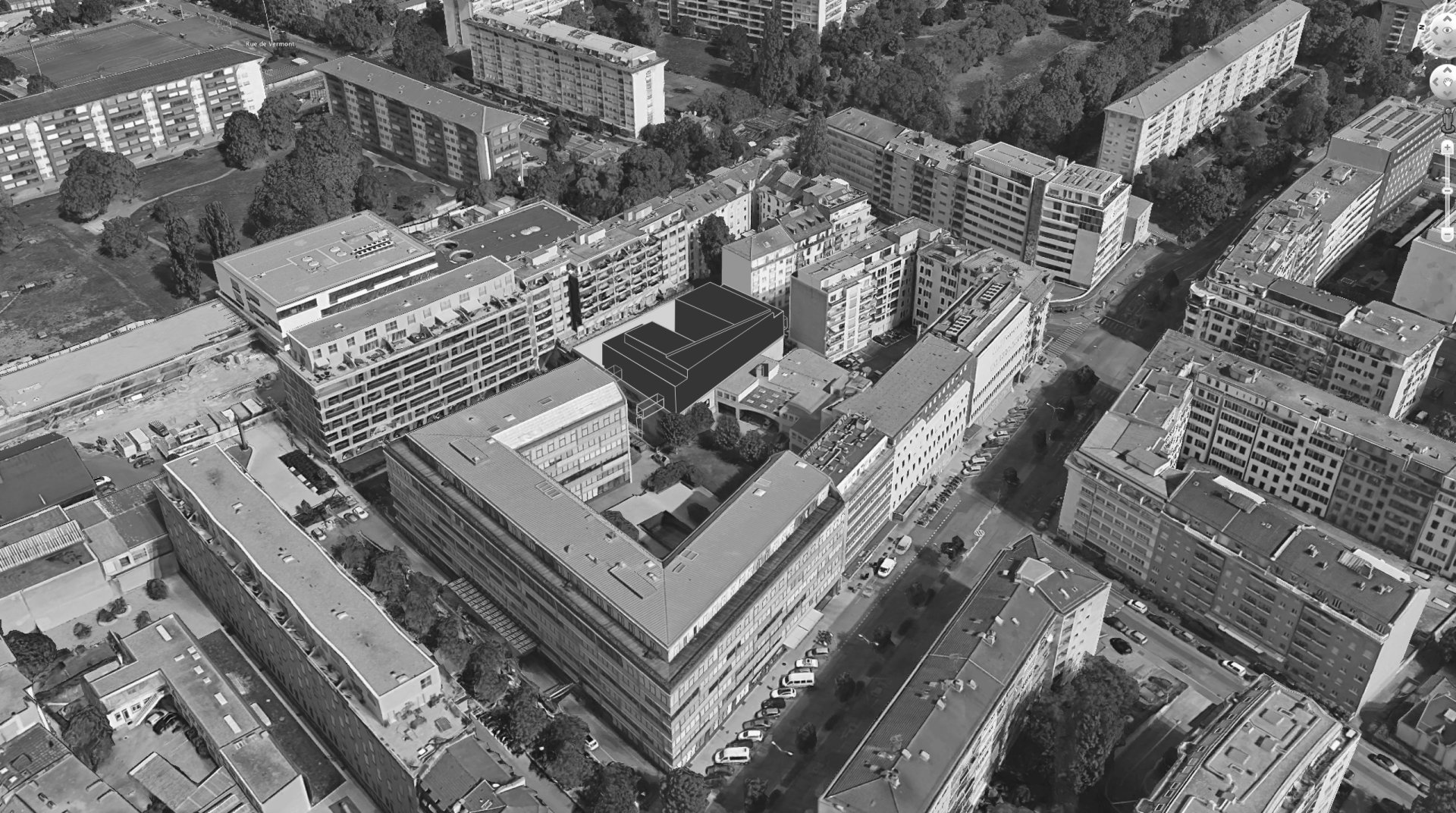Logements pour étudiants
Vermont-Genève



Logements pour étudiantsVermont-GenèvePrivé
surélévation
« après la densification du sol… c’est la densification du ciel ! » paul virilio
au moment où les questions de densité urbaine dépassent les simples notions de nécessité pour s’inscrire dans les considérations inquiètes du devenir de nos villes, et des interrogations sur leur extension horizontale, le thème de la surélévation, extension cette fois verticale et ponctuelle d’un existant qui serait sous-exploité, prend tout son sens.
augmenter la surface au sol par surélévation est assimilé directement à augmenter le nombre des habitants d’un édifice ou, par mixité, à permettre une addition fonctionnelle. ainsi, l’action de bâtir implique un processus intermédial qui fait converger des pratiques et des formes culturelles disparates.
les formes préexistantes, leurs modes d’usage, ne sont pas, cela va de soi, réutilisées comme de purs et simples résultats appliqués, mais comme une épure à développer, qui imprime sur l’espace, par l’appel constant fait à la mémoire, un sentiment flou d’appartenance, de déjà-vu, empêchant d’en devenir la copie, la vaine reproduction.
bien que l’usage, la pratique, l’occupation, la notion du prolongement, de la relation, ne quittent jamais les lieux nouvellement investis, le recours, par l’image redessinée, à cette notion de mémoire, ne porte pas à identifier un ailleurs, à donner à voir, dans une nouvelle définition thématique, une pièce urbaine confirmant l’ensemble et le complétant, et participant au déplacement que subit le concept de sol.
le terme de surélévation est galvaudé ou regroupe trop largement la catégorie d’ouvrage qu’il est censé définir. il nous faut distinguer superposition et surélévation. la question morphologique du toit, forme aboutie ou en attente, ou plus généralement couronnement d’un édifice, se pose.
parle-t-on d’ailleurs davantage de superposition, par empilement ou simple addition ?
vertical extension
"after the densification of the ground… it’s the densification of the sky!" paul virilio
at a time when questions of urban density go beyond simple notions of necessity to become part of growing concerns about the future of our cities and their horizontal expansion, the theme of vertical extension, a vertical and occasional expansion of an underused existing structure, takes on its full meaning.
increasing usable space by building upward is directly associated with increasing the number of inhabitants in a building, or, through functional mix, enabling an added use. building, in this sense, implies an intermedial process that brings together diverse practices and cultural forms.
preexisting forms and their modes of use are not simply reused as ready-made templates, but as outlines to be developed, leaving an imprint on space through a constant appeal to memory. this evokes a blurred sense of belonging, of déjà-vu, without resulting in a copy or a hollow reproduction.
even though use, practice, occupation, the idea of continuation and relationship never fully disappear from newly invested spaces, the recourse to memory through redrawn imagery does not aim to identify an elsewhere. rather, it seeks to reveal, through a new thematic definition, an urban piece that confirms and completes the whole, while participating in the shifting meaning of the concept of ground.
the term vertical extension is overused or too broadly applied to the type of construction it is meant to define. we must distinguish between superposition and vertical extension. the morphological question of the roof, whether completed, in progress, or more generally the crowning of a structure, inevitably arises.
are we actually talking more about superposition, by stacking or simple addition?